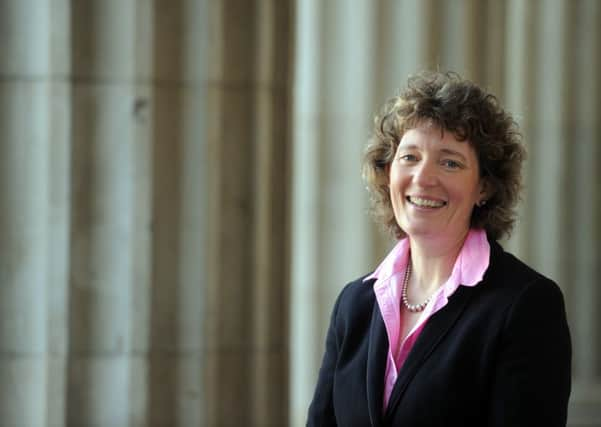National Trust for Scotland: Radical change urged


Kate Mavor, chief executive of the National Trust for Scotland, said there was a risk of the organisation being taken to the “brink” because of the multi-million pound repair and restoration bill it is grappling with over the next decade.
A major downsizing of its existing 80-strong portfolio of flagship attractions, a rebranding to attract a much younger audience and shed an elitist image, and a merger with other heritage bodies were all discussed yesterday as part of a radical overhaul, planned to take effect within the next two years.
Advertisement
Hide AdSir Kenneth Calman, NTS’s chair, told its annual general meeting he would be standing down to allow a new figurehead to steer the organisation through the period of change and tackle “the many issues and challenges.”
Predictions of dwindling public sector support for the heritage sector, declining visitor numbers as families are drawn to rival attractions with more modern and technology-friendly facilities, and an ageing membership demographic have all been identified as problems for the trust.
Ms Mavor was appointed five years ago at a time of unprecedented crisis for NTS, when its financial reserves had plummeted millions of pounds below the recommended level. Several properties were mothballed, 45 jobs were lost and the trust was forced to sell off its historic headquarters in Edinburgh’s New Town.
Ms Mavor told the audience at Stirling University: “There was a hard lesson learned as I was taking up my post. Long-standing underlying weakness within the trust conspired with unanticipated economic circumstances and almost derailed us. We avoided the worst and drew back from the brink, but I don’t ever wish to see the trust come close to the brink again.
“If we cannot be master of all the factors that affect our future, we should make every effort to anticipate and assess these properly. We must be sufficiently nimble to ensure we can adapt in good times, rather than be buffeted into decisions we would rather not choose to take.
“We have calculated that we need to raise another £46 million over the next decade just to achieve the conservation ambitions we have for our existing portfolio of properties, without any scope for taking on more places.”
Advertisement
Hide AdThe summit was told that the trust urgently needed to reduce the current financial burden of looking after its array of historic houses, castles and gardens, as well as protected habitats, wilderness areas and vast country estates which it is currently responsible for.
The AGM also heard that the charity had to tackle a problem with public perceptions that NTS was an “aloof” organisation that simply promotes “the history of rich people in big houses.”
Advertisement
Hide AdPlans being suggested include disposing of some long-standing sites that had previously been bequeathed to the trust to look after, as well as handing over the running of land and even individual islands to local communities and independent trusts. NTS has also raised the prospect of a national heritage collection being developed to help spread the cost and responsibility of looking after some of Scotland’s best-loved heritage treasures.
Lord Lindsay, the new president of NTS, told the members: “The fundamental issue is one of change. Whether we like it or not, the world is changing around us and we must respond to that. Ideally, we must be in the vanguard of that change if we are to remain viable and relevant.”
SEE ALSO